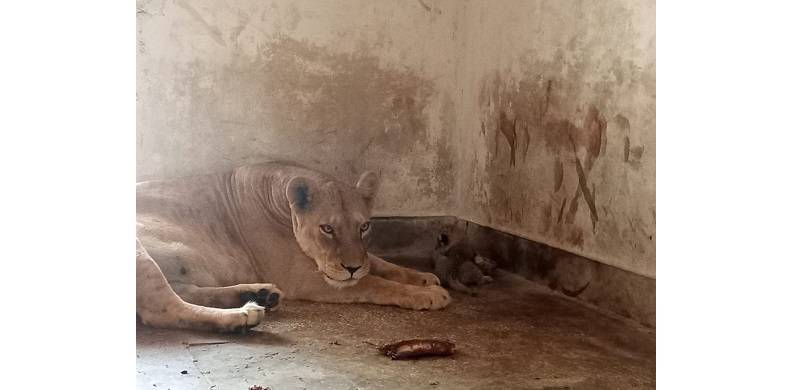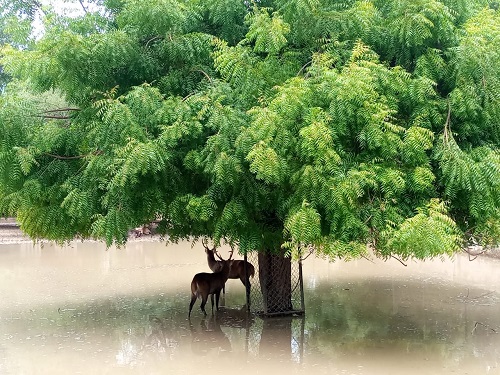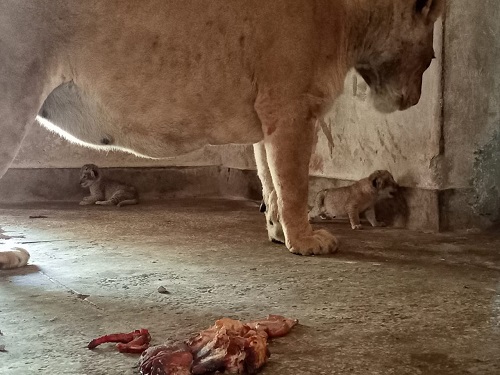
Undoubtedly, the zoo stands as man's most regrettable invention, as it entails the lifelong imprisonment of innocent animals. The plight of "Kavaan, The Elephant," hailed as the loneliest creature on Earth, not only serves as a poignant recent illustration but also raises a pressing question: are we, as a nation, incompetent even in the management of such invaluable wildlife? Why do we rarely encounter reports of such degrading incidents occurring in other countries, exposing an entire nation's failure in caring for an elephant?
During an investigation into the reasons behind Pakistan's zoo failures, the DG Khan Zoo was examined as a case study to identify the causes of these shortcomings.
 The foremost factor contributing to the inadequacy of zoos in Pakistan, particularly in Punjab, is their operational focus on revenue generation through entertainment, while completely disregarding the more vital objectives of wildlife conservation and research-based education.
The foremost factor contributing to the inadequacy of zoos in Pakistan, particularly in Punjab, is their operational focus on revenue generation through entertainment, while completely disregarding the more vital objectives of wildlife conservation and research-based education.
Take the example of DG Khan Zoo, which suffers from glaringly inappropriate design and construction, seemingly making it the next probable candidate for closure, following in the footsteps of Islamabad's Murghazar zoo. Consider its location, situated in close proximity to two bustling city roads, whereas international standards for zoos place utmost importance on ensuring a minimum distance of two kilometres from any traffic noise.
Take the cage designs as another example: we find that black bucks that are native to sand dune habitats, spotted deer from dense forests, and hog deer from riverine environments are all housed in identical cages with uniform topography that fails to cater to any of their natural requirements.
The situation is further exacerbated by the lack of specific and targeted cage enrichment that would provide a natural appearance and replicate the cozy ambiance of their natural habitats for the animals. For instance, the monkey cages lack even a single live tree, which is a fundamental necessity for these arboreal primates. Consequently, due to inadequate cage designs and placement, wild animals endure a constant state of depression and compromise, plagued by a persistent sense of insecurity.
As a result of these shortcomings, breeding lions at DG Khan Zoo has consistently proven unsuccessful. The lion enclosure is situated adjacent to a busy road, subjecting the lioness mother to a distressing and noisy environment. The survey findings revealed that the external loud noises pose a constant threat, causing the lioness to become agitated and leading to an instance where she even killed her own cubs.
Warning: Video contains disturbing content - viewer discretion is advised
The level of planning can be gauged from the fact that DG Khan Zoo was constructed in so flawed a manner that it completely disregards the provision of the most basic necessity of life: water
Within DG Khan zoo, animals are provided with hard water for drinking, despite government laboratory tests declaring this water as "unfit for use in crops and any type of plants."
The incompetence of non-technical authorities reaches its peak when one observes the complete absence of safety measures around cages housing dangerous animals like lions and tigers. In the event of a visitor accidentally falling into a cage, there are no safety arrangements in place. According to international safety standards, a water cannon should be installed in close proximity to any big cat enclosure in a zoo to assist any unfortunate visitor who may fall inside the cage. The lack of safety protocols and emergency equipment jeopardizes visitor safety at DG Khan Zoo.
During an investigation into the reasons behind Pakistan's zoo failures, the DG Khan Zoo was examined as a case study to identify the causes of these shortcomings.
 The foremost factor contributing to the inadequacy of zoos in Pakistan, particularly in Punjab, is their operational focus on revenue generation through entertainment, while completely disregarding the more vital objectives of wildlife conservation and research-based education.
The foremost factor contributing to the inadequacy of zoos in Pakistan, particularly in Punjab, is their operational focus on revenue generation through entertainment, while completely disregarding the more vital objectives of wildlife conservation and research-based education.Take the example of DG Khan Zoo, which suffers from glaringly inappropriate design and construction, seemingly making it the next probable candidate for closure, following in the footsteps of Islamabad's Murghazar zoo. Consider its location, situated in close proximity to two bustling city roads, whereas international standards for zoos place utmost importance on ensuring a minimum distance of two kilometres from any traffic noise.
The level of planning can be gauged from the fact that DG Khan Zoo was constructed in so flawed a manner that it completely disregards the provision of the most basic necessity of life: water
Take the cage designs as another example: we find that black bucks that are native to sand dune habitats, spotted deer from dense forests, and hog deer from riverine environments are all housed in identical cages with uniform topography that fails to cater to any of their natural requirements.

The situation is further exacerbated by the lack of specific and targeted cage enrichment that would provide a natural appearance and replicate the cozy ambiance of their natural habitats for the animals. For instance, the monkey cages lack even a single live tree, which is a fundamental necessity for these arboreal primates. Consequently, due to inadequate cage designs and placement, wild animals endure a constant state of depression and compromise, plagued by a persistent sense of insecurity.
As a result of these shortcomings, breeding lions at DG Khan Zoo has consistently proven unsuccessful. The lion enclosure is situated adjacent to a busy road, subjecting the lioness mother to a distressing and noisy environment. The survey findings revealed that the external loud noises pose a constant threat, causing the lioness to become agitated and leading to an instance where she even killed her own cubs.
Warning: Video contains disturbing content - viewer discretion is advised
The level of planning can be gauged from the fact that DG Khan Zoo was constructed in so flawed a manner that it completely disregards the provision of the most basic necessity of life: water
Within DG Khan zoo, animals are provided with hard water for drinking, despite government laboratory tests declaring this water as "unfit for use in crops and any type of plants."
The incompetence of non-technical authorities reaches its peak when one observes the complete absence of safety measures around cages housing dangerous animals like lions and tigers. In the event of a visitor accidentally falling into a cage, there are no safety arrangements in place. According to international safety standards, a water cannon should be installed in close proximity to any big cat enclosure in a zoo to assist any unfortunate visitor who may fall inside the cage. The lack of safety protocols and emergency equipment jeopardizes visitor safety at DG Khan Zoo.

